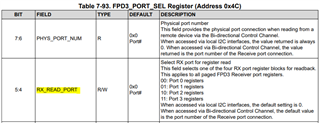Dear TI,
The deserializer is ti960, and the serializer of the camera module is ti935.
Now the serializer and deserializer can communicate through I2C.
I want to ask the deserializer side or the serializer side, which registers can be used to confirm that the frame data has been transferred from the serializer to the deserializer.
Wish you a happy life.
Xinyu.


